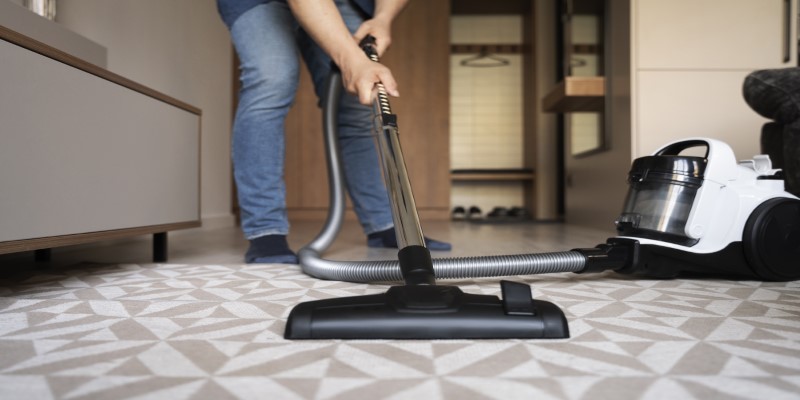Pet Allergies: How To Live Comfortably With Pets When You Have Allergies
Having pets can bring immense joy and companionship into our lives, but for many, the presence of furry friends can also lead to uncomfortable allergies. If you love your pets but find yourself sneezing, itching, or experiencing other allergy symptoms, you're not alone. Millions of people struggle with pet allergies, and understanding how to manage these allergies can help create a comfortable living environment for both you and your pets. This article will delve into the nature of pet allergies, common symptoms, effective management strategies, and ways to enhance your home environment.
Understanding Pet Allergies
Pet allergies are primarily caused by proteins found in a pet's skin cells, urine, saliva, and feces. When these proteins, often referred to as allergens, become airborne, they can trigger allergic reactions in sensitive individuals. Contrary to popular belief, it's not just the fur of the pet that causes allergies. The dander, or tiny flakes of skin, is often the primary culprit. Additionally, saliva can stick to fur and be transferred to surfaces around the home, exacerbating allergy symptoms.

Common pets that trigger allergies include dogs and cats, but other animals, such as rabbits, birds, and rodents, can also cause allergic reactions. It's important to note that individuals can develop allergies to pets they have lived with for years, as sensitivities can change over time.
Recognizing Symptoms Of Pet Allergies
Pet allergy symptoms can vary in severity and may include sneezing, runny or stuffy nose, itchy or watery eyes, skin rashes, and even asthma attacks. For some individuals, exposure to pets can lead to more severe reactions, particularly for those with pre-existing respiratory conditions. Recognizing these symptoms is the first step in managing allergies effectively. If you suspect that you have a pet allergy, it may be wise to consult with a healthcare provider or an allergist who can perform tests to confirm your allergy and help develop a management plan.
Creating An Allergy-Friendly Home
Once you have identified your allergies, you can take steps to create a more allergy-friendly home environment. The first line of defense is to minimize your exposure to allergens. Here are several practical strategies to help manage pet allergies at home:
Regular Cleaning Routine
Implementing a rigorous cleaning routine can significantly reduce allergens in your living space. Vacuuming carpets, rugs, and upholstery regularly with a vacuum equipped with a HEPA filter will help capture pet dander and hair. It’s also beneficial to wash pet bedding, blankets, and toys frequently in hot water to eliminate allergens. Mopping hard floors with a damp mop can help collect dust and dander rather than stirring it up into the air.

Designate Pet-Free Zones
Creating pet-free zones in your home can provide a haven for allergy sufferers. Bedrooms are particularly important, as a good night's sleep is crucial for overall health. Keeping pets out of these areas helps reduce allergen accumulation. You can also consider designating specific areas for your pets, such as a separate room or a cozy corner with their bed and toys, to contain allergens more effectively.
Use Air Purifiers
Air purifiers with HEPA filters can significantly improve indoor air quality by trapping pet allergens and other airborne particles. Placing these purifiers in frequently used areas, such as the living room and bedroom, can help reduce the concentration of allergens. Regularly replacing filters according to the manufacturer's instructions is essential for maintaining the purifiers' effectiveness.
Grooming And Bathing Your Pet
Regular grooming is crucial for managing pet allergies. Brushing your pet outside can help reduce shedding and dander inside your home. If you have a dog, consider giving them baths every few weeks with a pet-friendly shampoo to minimize dander and allergens. While grooming your pet, wearing a mask and gloves can help reduce your exposure to allergens.

Choosing The Right Pet
Suppose you're considering bringing a pet into your home and have a history of allergies. Research hypoallergenic breeds. While no breed is entirely free of allergens, some breeds are known to produce fewer allergens than others. For example, breeds like Poodles, Bichon Frises, and certain terriers are often recommended for allergy sufferers. Keep in mind that individual reactions can vary, so spending time with a breed before committing can help you assess your tolerance.
Medical Management Of Allergies
In addition to environmental management, various medical options can help alleviate allergy symptoms. Antihistamines, decongestants, and nasal corticosteroids are common medications that can provide relief. These medications can help manage symptoms like sneezing, runny nose, and itchy eyes. It's essential to discuss these options with a healthcare professional to determine the best approach for your specific situation.
For individuals with more severe allergies, allergy shots or immunotherapy might be a viable option. This treatment involves receiving regular injections of small amounts of allergens over time, gradually increasing the dosage to help the immune system build tolerance. This approach can lead to long-term relief from allergy symptoms, but it requires a significant commitment and should be pursued under the guidance of an allergist.
Lifestyle Adjustments
In addition to environmental changes and medical management, adopting specific lifestyle adjustments can help alleviate pet allergy symptoms. These may include:
Keeping Windows Closed
During high pollen seasons, keeping windows closed can prevent outdoor allergens from entering your home. Using air conditioning can help filter out allergens and maintain a comfortable indoor temperature.

Understanding The Emotional Impact
Living with pet allergies can be emotionally challenging, especially for those who deeply bond with their pets. It's essential to acknowledge and address these feelings. Engaging in conversations with family and friends about your allergies can foster understanding and support. Additionally, considering therapy or support groups can help you navigate the emotional aspects of living with allergies while still enjoying the companionship of your pets.

Conclusion
Managing pet allergies is undoubtedly a balancing act, but with the right strategies and support, it's possible to live comfortably with pets. By understanding the nature of pet allergies, recognizing symptoms, and implementing practical management techniques, you can create a home that accommodates both your health and your love for animals. Whether it involves regular cleaning, medical interventions, or lifestyle adjustments, taking proactive steps can significantly improve your quality of life. Remember, the goal is to foster a harmonious environment where both you and your furry friends can thrive together.
Related Posts
- How To Build A Pet-Friendly Garden: Safe Plants And Features For Pets
- Pet Allergies: How To Live Comfortably With Pets When You Have Allergies
- The Science Behind Pet Emotions: Do They Feel Like Humans?
- Canine Communication: Decoding Your Dog’s Body Language
- Eco-Friendly Pet Care: Sustainable Choices for Pet Owners
- Is Pet Insurance Worth It? A Guide To Protecting Your Pet’s Health And Your Wallet